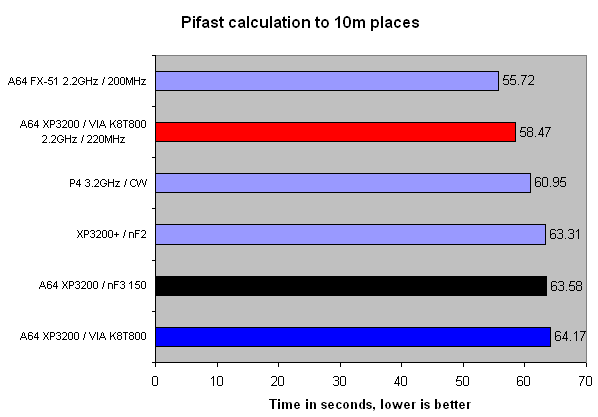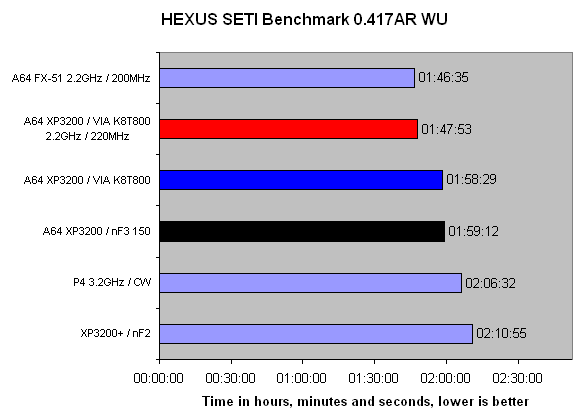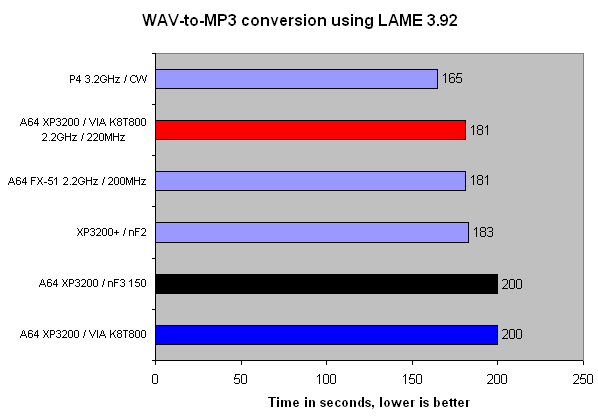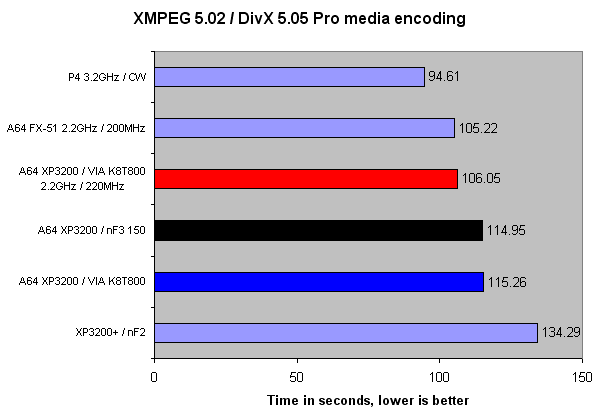Pifast, SETI, LAME, DivX
Pifast, the constant calculator, loves low latency memory access and large on-chip caches. Sounds like an A64 3200+ scenario to me.

Low latency memory access and a larger L2 cache, amongst other things, does make a difference, but it can't overcome the 200MHz clock speed deficit to the Barton XP3200+ in this case. That's probably as much to do with the inability to define the DRAM latencies as any other factor. The nForce3 150 manages to eke out a reasonable lead over the EPoX / VIA implementation.. The overclocked EPoX 8HDA3+, though, running at 2.2GHz, is only second to the dual-channel FX-51 monster.

SETI is an activity that beats the CPU's cache and memory subsystem continuously for a 90-minute+ duration. Here, both A64 3200-powered boards managed to break the 2-hour barrier with relaxed memory timings, something which no Barton can do at default speeds and tight latencies. The overclocked A64 3200+ and EPoX manage to get very close to the FX-51's times, suggesting that single-channel unbuffered RAM can almost make up for dual-channel ECC DDR use. Imagine what the 939-pin non-ECC-powered FX will be able to do.

MP3 encoding is largely a computational activity. Memory bandwidth plays very little part here. You can see the underlying similarities between the FX-51, overclocked A64 3200+ and Barton XP3200+, all running at 2.2GHz.

Media encoding was undertaken with XMPEG v5.02. It chose the SSE2 optimisations for the P4 and both Athlon 64 processors. The test was to encode the first VOB of American History X using a bitrate of 1000kb/s. Benchmark mode was limited to the first 5,000 frames and no sound was encoded. Black borders were cropped too. The graph displays the time taken by each setup. A decent improvement from the K7-series, but still not able to outmuscle the SSE2 champion that is the Pentium 4.









